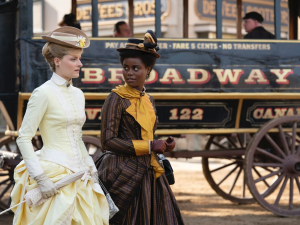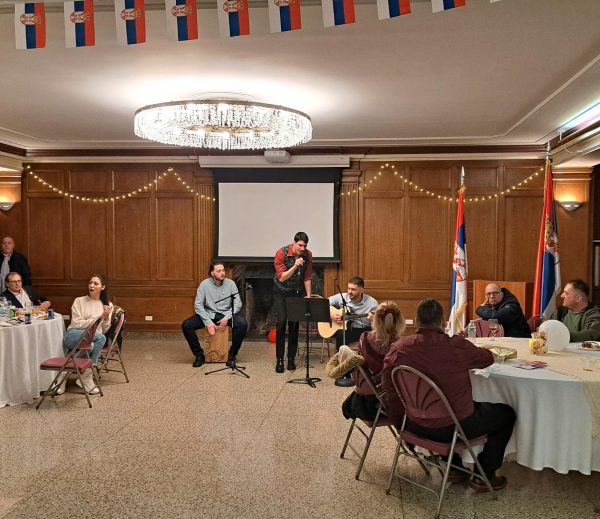Thomas Paine scholar announced Paine helped with Declaration of Independence at Iona conference
October 31, 2018
Exploring the origins of Paine’s Forgotten Text; the Declaration of Independence
The Institute for Thomas Paine Studies hosted an international conference from Oct. 11 to 13. At the conference, Gary Berton, coordinator for the ITPS, announced his claim that a newly discovered, authenticated and partial draft of the Declaration of Independence proves that Thomas Paine was involved in its creation.
The document only includes the first page of the Declaration. John Adams noted on the back of the draft: “A beginning perhaps – Original with Jefferson – Copied from the original with T.P.’s permission.”
The draft is referred to as the third draft because it is only the third draft to be discovered. Several copies of the Declaration were created during the Carpenters’ Hall meetings from June 18 to 25 of 1776, but only a few survived or have been recovered. The original document from which the third draft may have been transcribed has never been discovered publicly.
In the past, there has been a commonly held belief that only five key representatives of the Continental Congress were responsible for the creation of the Declaration of Independence – John Adams, Roger Sherman, Benjamin Franklin, Robert R. Livingston and Thomas Jefferson.
In his lifetime, Thomas Paine never received public credit for helping create the Declaration of Independence. Berton believes that this is because he was not a member of the Continental Congress.
“[Paine] should not have been there, which adds even more weight to his involvement,” Berton said in an email interview. “He probably acted as Franklin’s representative.”
Berton claims the third draft was circulated to Franklin, who was sick at the time of its creation. Soon after, Franklin transferred it to Sherman. Berton said that Franklin initialed the copy as his and dated it as June 24, 1776.
During the panel, Berton addressed Paine’s involvement among the key five writers.
“Thomas Paine may have even organized the committee of five,” Berton said. “He was the real leader. He has to be in some position of authority.”
Berton explained the third draft’s significance to Thomas Paine’s legacy.
“As someone who had authority within the Declaration drafting procedures, Paine can no longer be regarded as a side-line pamphleteer as he has been portrayed by most historians,” he said. “It had been commonly accepted that his Common Sense led to the Declaration in content and language, but now we see an active, even leading, organizer.”
Dr. Scott Cleary, an organizing committee member of the conference and a professor in the Iona English Department, shared the potential importance of this claim.
“The possibility that Thomas Paine had a role in the writing of the Declaration of Independence has been rumored in various early American history circles for decades,” Cleary said. “This is our best evidence yet that those rumors are rooted firmly in reality. The chance to alter our interpretation of America’s founding moment is an exciting one.”
Berton stated that the document has been authenticated through independent research by its owner, as well as through the Thomas Paine National Historical Association and other experts in the field. It has also been entered into the Declaration Resources Project at Harvard University, which focuses on “creating innovative and informative resources about the Declaration of Independence,” according to the project’s website.
“[The Declaration Resources Project has] also confirmed that the only T. P. in Philadelphia in June 1776 who had any contact with the Committee to draft the Declaration was Thomas Paine,” Berton said.
This third draft is nearly identical to the Adams formal copy which is held by the Massachusetts Historical Society, according to Berton.
The document has had a long history of changing hands. Berton claims that after Sherman owned it, he gave it to Colonel Alexander Lowery, who later passed it on to his relatives. The third draft was rediscovered within a box of discarded papers in Bowden, Georgia by an elderly man. The man found it in an Estate Auction booklet of General Hugh White, a brigadier general in the War of 1812. The current owner, who wishes to remain anonymous, purchased the draft and the estate booklet from the man in 2009. White’s grand-uncle, Lowery, was a Lancaster County, Pennsylvania Committee of Correspondence member, an organization that secretly challenged colonial rule before the American Revolution. Lowery was present in Carpenters’ Hall on June 24, 1774 when discussions concerning the Declaration of Independence took place. The manuscript for the third draft has the same date.
Berton shared that the official findings of the ITPS are on the way to mainstream academia.
“An article is nearly complete about the document and will be submitted to a noted early American journal,” Berton said.
Cleary praised Berton for his work with the ITPS and Iona College.
“Gary Berton, as secretary of the Thomas Paine National Historical Association, has not only helped resurrect that organization into local and national prominence, but has spent much of his free time over the past six years attempting to verify every facet of that document, from the paper and handwriting, to the ink and provenance,” Cleary said.
Founded in 2011, the Institute for Thomas Paine Studies is a collaboration between the Thomas Paine National Historical Association and Iona College. Dr. Nora Slonimsky is the Director for the ITPS as well as a professor in the Iona History Department.
“Through our social and digital media presence, our burgeoning relationships with museums, organizations and other information and media outlets, we want to welcome and communicate with all interested audiences the significance of history and its relevance to today!” Slonimsky said in an email interview. “Paine himself spent his career in dialogue with networks of different people around the globe, and the ITPS wants to follow that example!”













